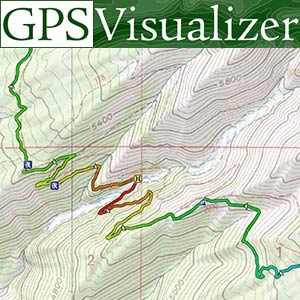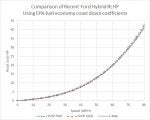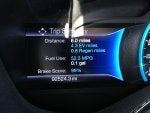I've owned a 2020 Escape Hybrid for a few days now and it is apparent that certain techniques and habits lead to significantly better utilization of the battery and, subsequently, much better MPG. I'm starting this thread to be a place for hybrid owners to discuss their experiences and what they have found to be the best ways to maximize MPG without being an irritatingly slow hyper-miler : )
I'll start with a bulleted list of my observations below and evolve this into more "confirmed" strategies as we get more data.
Updated 3/25: @fbov input, thanks!
Terminology:
HVB: High Voltage Battery (NOT the 12V)
ICE: Internal Combustion Engine (gas)
SoC: State of Charge of the HVB
EV-mode: Using HVB-only to power the vehicle
Gas-mode: Using ICE-only to power the vehicle
Hybrid-mode: Using a combination of HVB/ICE to power the vehicle
Drop Throttle: Letting off on the accelerator until the HVB starts to regenerate energy
Hybrid Game: While at speed, using Drop Throttle and then re-engaging the accelerator pedal slow enough to get the vehicle to enter EV-mode. Do this on downslopes and flats, then accelerate harder to engage the ICE on upslopes.
I'll start with a bulleted list of my observations below and evolve this into more "confirmed" strategies as we get more data.
Updated 3/25: @fbov input, thanks!
Terminology:
HVB: High Voltage Battery (NOT the 12V)
ICE: Internal Combustion Engine (gas)
SoC: State of Charge of the HVB
EV-mode: Using HVB-only to power the vehicle
Gas-mode: Using ICE-only to power the vehicle
Hybrid-mode: Using a combination of HVB/ICE to power the vehicle
Drop Throttle: Letting off on the accelerator until the HVB starts to regenerate energy
Hybrid Game: While at speed, using Drop Throttle and then re-engaging the accelerator pedal slow enough to get the vehicle to enter EV-mode. Do this on downslopes and flats, then accelerate harder to engage the ICE on upslopes.
- NORMAL (default) vs. ECO Mode
- Have to switch modes on every key cycle. No known ability to "default" this to any other mode.
- NORMAL applies markedly less axle braking, thus regenerating less energy to the HVB while coasting. Typical ECO coast power gen is ~17kW.
- IF AVAILABLE: Use "Intelligent Cruise w/ Stop-and-Go". It is very good at staying in EV-mode whether in NORMAL or ECO. Works best with flat conditions, but returns solid MPG and HVB usage even on gently rolling terrain.
- Acceleration
- "Chasing Blue": As you accelerate from a stop, you will see the EV Cach blue-outlined bar grow slowly with speed. To remain in battery-only usage, you must increase throttle slowly to stay in EV-mode.
- When HVB SoC is high, the HVB may assist the ICE, entering Hybrid-mode. It is believed (citation needed?) that this is less efficient than keeping the vehicle in exclusively EV- or Gas-modes. As a result, try to stay out of hybrid mode.
- Maximum HVB rate of discharge seems to be around 22 kW. Beyond that, the ICE will be engaged regardless of the SoC.
- Deceleration
- Recovering energy at a rate higher than 30 kW is typically less than 100% efficient
- At complete stops, getting efficiency ratings above ~93% is effectively equivalent to 100% efficient stops, and often results in a considerably more comfortable stopping motion.
- "Efficient" speeds
- Realistically, slower in general is better, but you're the judge of how slow you're willing to drive.
- See below for Road Load HP Curves for the Escape vs. the C-Max. This graphs power required to hold a given speed.
-
(1 HP = 0.746 kW, so 20 HP is about 15 kW)
The most obvious feature is the strong upward trend, roughly the square law: 30 MPH requires 1/4 the power of 60 MPH, and from 60 MPH, you need 50% more to hold 70 and twice 60's power to make 80 MPH.
- General
- ALWAYS USE EV COACH WHEN YOU ARE NEW TO THE VEHICLE!
- There is no explicit SoC gauge or indicator. The outline of the blue EV bar in EV Coach is all that is available. "Full Charge" is roughly equivalent to the blue bar extending to the letter "C" in the ELECTRIC above. When you see this shrinking continuously at even low speeds, it means the HVB is nearly depleted.
- While at speed, employ Drop Throttle to play the Hybrid Game. This requires some extra attention while new to the vehicle or learning the ups-and-downs in a certain route like a commute.
- The power gauges and the 8" touchscreen display on energy usage seem to be tailored towards the plug-in variant. The gauge ranges are much higher than often get used for the non-plug-in hybrid and the touchscreen energy usage display changes so rapidly between the modes because the battery small enough to make EV-only operation more of a rarity. Perhaps Ford can patch this to make these slightly more user-friendly and tailored for non-plug-in hybrids and their much smaller HVB.








